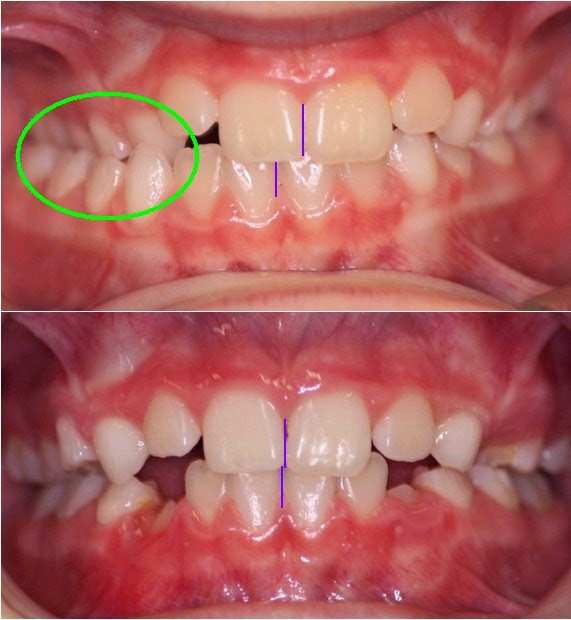For a single tooth crossbite your #orthodontist may elect to use buttons and elastics but for multiple teeth they are more likely to choose a removable plate or a fixed #expander such as a quad-helix appliance or a rapid-maxillary expander (RME), also known as a rapid-palatal expander (RPE). Plates can be successful but rely on compliance from the patient with ~20-30% not cooperating - which makes the orthodontists job a bit harder :-/ . Research has demonstrated that the fixed type of expanders (quad-helix, RME/RPE) remove this compliance issue as they are cemented in place and so tend to be more successful and offer slightly more expansion (~1mm).
A posterior #crossbite (circled in green on the right) can result in a slide of the lower jaw to one side on closing creating a bite asymmetry and midline discrepancy (purple lines). Expansion to correct the bite interference can correct some asymmetries (as in this example) while others will have a persistent asymmetry that may require future treatment. Treatment of asymmetries will be the topic of a future Blog. Expansion can also be used to create space as covered in a previous Blog. So if you have a posterior crossbite, visit your orthodontist for them to assess the most appropriate appliance that best suits your needs.
Dr Peter Miles is the orthodontist at Newwave Orthodontics in Caloundra, Australia and teaches orthodontics part-time at the University of Queensland. He is a visiting lecturer at Seton Hill University in the USA as well as lectures internationally. Peter is one of the editors and authors of the orthodontic textbook, 'Evidence-Based Clinical Orthodontics'.














